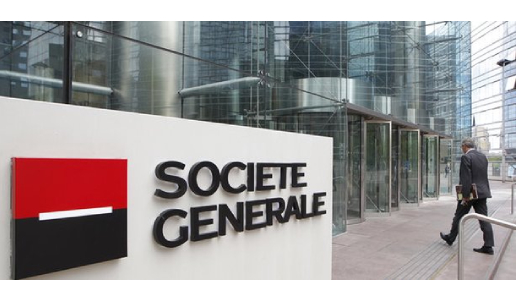Recent News
Read the latest news and stories.

Project of Implementation the bank’s BI framework – MOA phases for ‘’SGMA’’

ABOUT THE CLIENT
Société Générale is one of the major Banks in Morocco, has been operating in Morocco for more than a century and is resolutely committed to a long-term and sustainable development strategy, conducted to serve the national economy, to contribute to the country’s growth and to support the dynamics of bank penetration.
PROJECT OVERVIEW
As part of the implementation of the bank’s central Business Intelligence system, we worked on several aspects of project management assistance.
TECHNICAL DIFFICULTIES
Here are some of the difficulties we encountered:
Understanding business needs: User needs poorly understood or communicated. Difficulty translating business needs into technical specifications.
Scope changes: Business needs and priorities evolve during the course of the project, resulting in scope changes and adjustments to the initial plan.
Poor-quality data: The data used for BI was often of poor quality, incomplete or inconsistent, which could have compromised the accuracy of reports and analyses without clean-up work.
Complexity of data sources: The bank has complex information systems with numerous data sources. Integrating these sources was not straightforward.
Data security and confidentiality: Banking data is sensitive and regulated. Ensuring data security and confidentiality while making it accessible for analysis was a challenge in itself.
Performance management: Data volumes were enormous. Ensuring fast performance for queries and reports was a technical challenge.
Resistance to change: End-users were often reluctant to adopt new BI tools or change their usual work processes.
Interdepartmental coordination: BI involves several departments within the bank, requiring close coordination to ensure smooth implementation.
Choice of tools and technologies: Selecting the right BI tools that match business needs while respecting budgetary constraints.
Scalability: Ensuring that the BI system can evolve to meet future needs while maintaining the stability of the current system was a challenge too.
Stakeholder management: Ensuring that all stakeholders were satisfied and appropriately involved throughout the project was tricky.
THE SOLUTION
Understanding business needs: We identified the specific needs of the info center in collaboration with internal stakeholders. Understanding of objectives, business processes, KPIs and reporting requirements.
Definition of project objectives: We clearly established the objectives of the BI project for the info center, including what was desired in terms of reporting, data analysis and decision-making.
Project planning: Development of a detailed project plan including milestones, resources required, timescales and costs. Identification of potential risks and implementation of mitigation measures.
Functional design: Work with business teams to design the necessary reports, dashboards and analyses. Define data structure, data models and indicators to be tracked.
Development and integration: Supervision of BI component development, including data extraction and transformation, report creation, dashboard creation, ensuring integration into the existing environment.
Testing and validation: comprehensive testing to ensure that reports and analyses are accurate, complete and meet business needs. Obtain validation from stakeholders. User training: Provide training to end-users so that they can use BI tools effectively. Ensure they understand how to access reports, dashboards and data.
Go-live: Deploy BI components to production in a controlled manner. Ensure that backups, data security and performance are properly managed.
Follow-up and maintenance: Implement follow-up procedures to monitor system performance, detect potential problems and make adjustments where necessary. Ensure that software updates and maintenance are carried out regularly
Continuous evolution: Keep abreast of the changing needs of the info center and adapt the BI system accordingly. Identify opportunities for continuous improvement.
Communication: Ensure open communication is maintained with stakeholders throughout the project, providing regular progress updates, resolving issues promptly and obtaining their feedback.
Change management : Anticipating resistance to change and implementing change management strategies to facilitate user adoption of new BI solutions.
Evaluation of results: Regular evaluation of the results and impact of the BI project on the operations of the info center. Measure achievement of objectives defined at the planning stage.
Documentation: Maintain detailed records of all stages of the project, including documentation of decisions made, tests carried out and configurations implemented.
KEY BENEFITS
Better decision-making: The BI implemented provided relevant data and real-time analysis, enabling the bank’s executives to make informed decisions based on accurate information.
Improved risk management: BI enabled financial risks to be monitored and analyzed more effectively, helping the bank to minimize potential losses.
Optimized operations: BI was able to help identify operational inefficiencies
TECHNOLOGY
SAP Business Object
